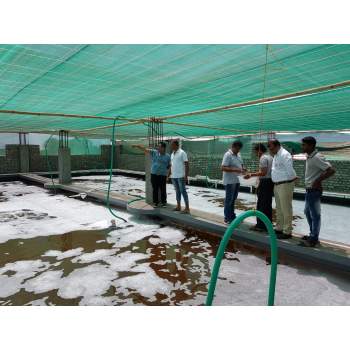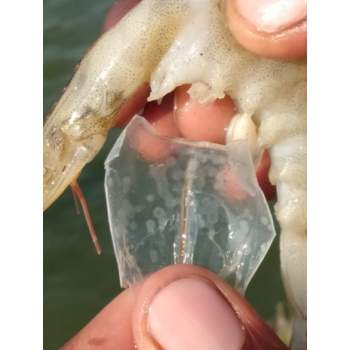

White spot disease (WSD) is the most serious threat faced by the shrimp farming industry worldwide. WSD was first reported in farmed P. japonicus from Japan in 1992-93, but was thought to have been imported with live infected post-larvae from mainland China. The disease is transmitted vertically from infected brood stock to larvae and horizontally either by ingestion of infected organisms or through carrier organisms. Most crustaceans including all penaeid shrimps (monodon, vannamei, indicus etc.) and crabs can be affected by WSD. All the life stages of shrimp may get infected by this virus.
Causes
White spot disease is caused by a virus called White Spot Syndrome Virus (WSSV). It is a rod-shaped double-stranded DNA virus of 120-150 x 270-290 nm size, assigned to a new virus family, whispoviridae.
Symptoms
Diagnosis
WSD may be diagnosed based on gross signs such as the presence of the characteristic white spots, and rapid mortalities. White spots may not be always seen in the early stages of infection in shrimp. WSSV can be detected using polymerase chain reaction (PCR), or with molecular tools such as dot-blot and in situ hybridisation (ISH) tests.
Prevention